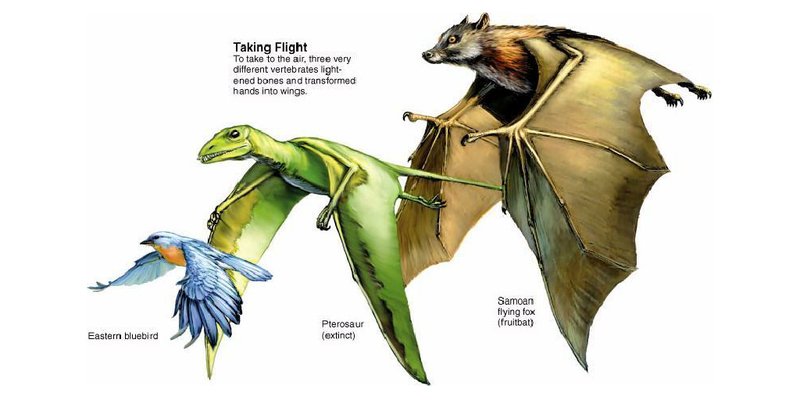
Imagine bats as the ultimate adapters, much like how we learn to navigate through life. They’ve evolved over millions of years, growing from simple ancestors into the sophisticated flying mammals we know now. Let’s dive into their evolutionary story, exploring how they took to the skies and what that means for them and the ecosystems they inhabit.
Early Ancestors: The Roots of Bats
To understand the evolutionary history of bats, it helps to look back at their early ancestors. Scientists believe that bats share a common ancestor with primates, which lived around 60 million years ago. These ancient mammals looked quite different from today’s bats. They were small, likely nocturnal creatures that lived in forests and fed on insects. Early bats were probably more similar to small rodents than the graceful flyers we see now.
As these early mammals continued to evolve, their bodies began to change in fascinating ways. Over time, some species developed adaptations that allowed them to glide and eventually fly. You might be wondering how this transformation happened, right? It’s all about the gradual changes in bone structure, muscle development, and fur patterns. Think of it like a recipe: each ingredient adds a unique flavor, ultimately creating a delicious dish that’s a perfect fit for its environment.
The Rise of True Bats
Fast forward a bit, and we arrive at the emergence of true bats, known scientifically as Chiroptera, roughly 50 million years ago. This is when bats really began to gain their individuality. They developed wings formed from elongated fingers and a membrane of skin stretched between their forelimbs and bodies, which enables them to fly. This was a game changer! By evolving powered flight, bats could access new food sources, escape predators, and explore various habitats.
You might find it interesting to note that there are over 1,400 species of bats today. That’s a lot of diversity! Ranging from the tiny bumblebee bat, which weighs less than a penny, to the massive flying foxes with wingspans up to six feet, bats can be found in nearly every corner of the world. This adaptability is a testament to their successful evolutionary journey.
Adaptations for Survival
One of the most remarkable aspects of bats is how they’ve adapted to various environments and lifestyles. Bats are often classified into two main groups: megabats and microbats. Megabats, also known as fruit bats, tend to have excellent eyesight and rely on sight rather than echolocation. They primarily feed on nectar, fruit, and pollen, playing essential roles in pollination and seed dispersal.
On the other hand, microbats are the ones that most people think of when they picture bats. They utilize echolocation, which is the ability to emit high-frequency sounds and listen for the echoes to navigate and hunt for prey. This talent allows them to locate tiny insects even in complete darkness! It’s like having built-in radar. Their adaptability offers not just survival advantages but also contributes to a balanced ecosystem.
The Role of Bats in Ecosystems
Bats play a crucial role in the health of our ecosystems. Their contributions are like tiny superheroes working silently in the background. With their insect-eating habits, bats help control pest populations, reducing the need for chemical pesticides. This is especially important for agriculture, where they can save farmers tons of money by keeping crops safe from harmful insects.
Additionally, bats are vital pollinators. Many plants depend on bats for pollination, ensuring a steady cycle of growth and reproduction. Without them, entire species of plants might struggle, leading to a domino effect on other animals that rely on those plants for food and habitat. Just picture a world without the delicious fruits we love—no chocolate, no bananas, and no avocados!
Challenges and Conservation Efforts
Despite their importance, bats face numerous challenges today. Habitat loss, climate change, and diseases like white-nose syndrome pose significant threats to bat populations. The loss of forests and urbanization disrupts their roosting and feeding habits, making survival more difficult. White-nose syndrome, a fungal infection, has decimated several bat species in North America, leading to severe population declines.
But here’s the silver lining: conservation efforts are in place to help protect these incredible creatures. Organizations are working to educate the public about the importance of bats and create safe habitats. Simple actions, like leaving dead trees for roosting or planting bat-friendly gardens, can make a big difference. You might even think about installing bat houses in your yard to support local populations!
The Future of Bats: What Lies Ahead
Looking ahead, the future of bats hinges on our actions today. As awareness grows and conservation measures increase, there’s hope for these amazing mammals. Scientists are constantly researching ways to protect bats and restore their habitats. The more we understand their evolutionary history and significance, the better equipped we’ll be to safeguard their future.
It’s essential to remember our shared responsibility in this journey. You might think, “What can I do?” Well, every little bit adds up. Whether it’s advocating for green spaces or supporting policies aimed at protecting wildlife, every action counts. Together, we can help ensure that bats continue to thrive in their environments, echoing the beauty of their evolutionary history for generations to come.
In summary, the evolutionary history of the bat is a captivating tale of adaptation and survival. From their early ancestors to the diverse species we see today, bats have demonstrated resilience and ingenuity. They’ve carved out their niche in the world, providing critical ecological services that benefit us all.
As we reflect on their journey, it’s clear that understanding bats and their evolutionary path is vital for their future. So the next time you hear the gentle flutter of wings or catch a glimpse of these elusive creatures at dusk, remember the incredible history behind them. They’re not just creatures of the night; they’re a testament to nature’s ability to adapt, thrive, and sustain life on Earth.
